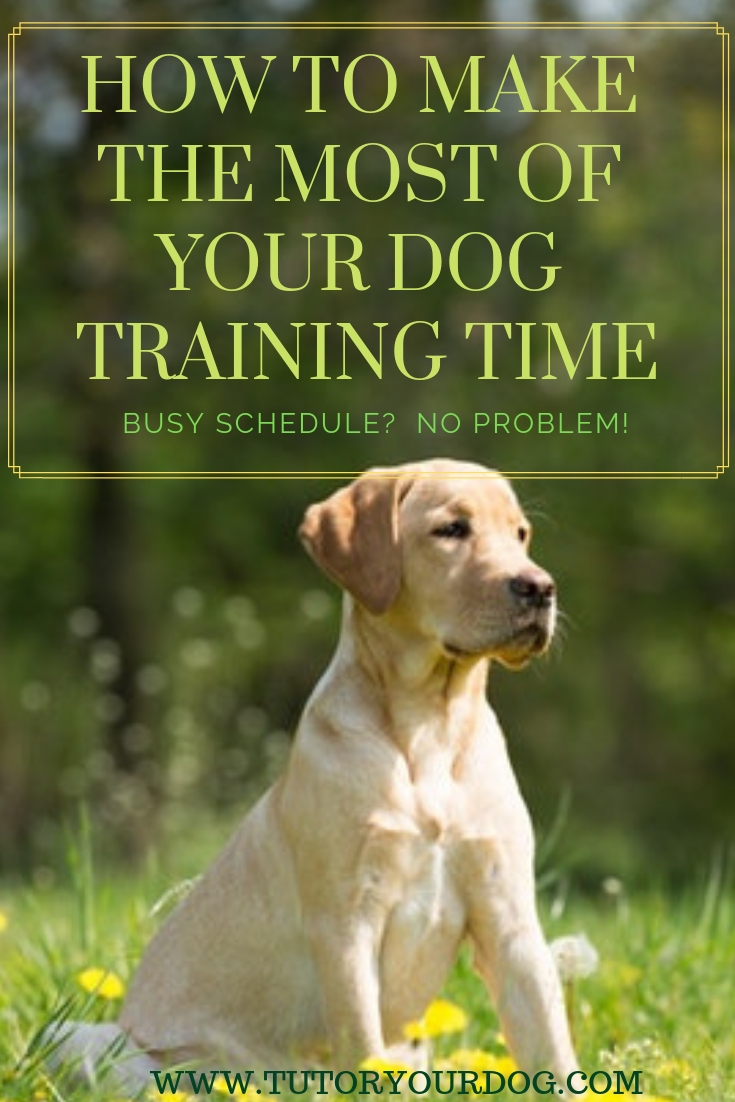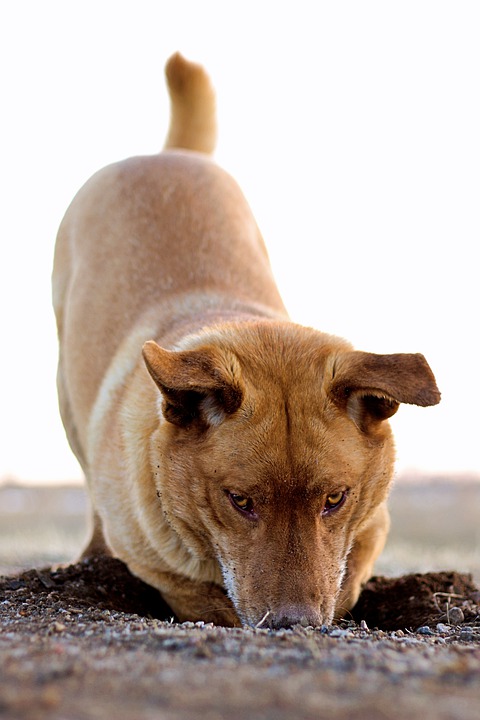{This post may contain affiliate links. This means we may make a small commission at no extra cost to you. This website is a participant in the Amazon Services LLC Associates Program. As an Amazon Associate we earn from qualifying purchases. We only recommend products that we believe will be of value to our followers. Click HERE to see our disclosure for details.}

Life is busy. I totally get that. It’s hard to fit dog training into your already busy day, it’s something that I struggle with on a daily basis too. But there are some tips and tricks to make the most of your dog training time. The truth is that you don’t have to spend hours a day training your dog in order to have a well mannered dog. In fact, it’s quite possible to fit your dog training into your daily schedule in short sessions.
Training your dog is important for many reasons. The first reason being that it makes your dog so much easier to live with and to take places if he learns manners and is well behaved. With these tips anyone can have a well trained and mannerly dog, even without spending hours a day training.
{This post may contain affiliate links. This means I may make a small commission at no extra cost to you. See my disclosure for details.}
Make The Most Of Your Dog Training Time
Your dog’s training can be broken down in 5 to 10 minute sessions throughout the day. To have a well behaved dog, there is no need to do all of your daily training in one long session. You can incorporate your training in sessions, during the activities that you would be doing with your dog anyway on a daily basis.
Incorporate Dog Training Into Your Dog’s Feeding Schedule
During feeding time is an ideal time to train your dog. You can put him in a sit stay or down stay while you prepare his food. You can also make him wait for his food until you give him the release command. This not only teaches your dog manners, it also teaches him impulse control. His food bowl is his reward but he has to work for it. He does not get his food until he does his sit stay and not until you give him the release word.
When you are teaching your dog to “stay”, start off with just a few seconds and gradually increase the time that he must stay. It can help to have a target for him to sit on at first while he is learning, some people use a mat or a box. If he gets up from his spot, put him back and then start over again. If it’s hard to get him to stay, decrease the amount of time and then gradually work your way up again.
Incorporate Dog Training Into Your Dog’s Daily Walks
Your dog’s training can start even before you leave for his walk. Ask him to sit while you put his leash on. Do not put it on until he is sitting and is calm. You can do this same thing when you remove his leash after his walk.
While you are on your walk, you can make the most of your dog training time by working on training your dog to walk on a loose leash. Make sure that you have a pocket full of treats for this. I even use my dog’s kibble, as I use a lot of rewards when first teaching my dog to walk on a loose leash. I’m pretty sure that my dog sees me as a human treat dispenser! Every time that my dog walks beside me and isn’t pulling, he gets a treat. When first training this, I give lots of treats so he realizes that when he is walking in a certain spot it is exactly what I want. You can gradually decrease the treats once he gets used to walking in this position.
Once your dog gets used to walking on a loose leash, you can practice turning left or right. You can find things to walk around like signs, people and benches. It’s also fun to switch it up a bit and ask your dog to walk on your right side instead of only walking on the left. Keep him focused by switching your pace. Walk slow and then speed things up a bit.
Some dogs like to barge through gates or doorways before their people. While you are on your walk, find a doorway or a gate and practice having your dog walk beside you through the doorway or gate.
Work on focus. During your walk, stop randomly and ask your dog to sit, lie down or look at you.
Of course, you don’t have to work on all of these skills during every walk. Pick one or two to work on during each walk. Once he learns one skill move on to another and occasionally review the ones that he already knows.
Incorporate Dog Training Into Your Dog’s Exercise And Play Time
You can make the most of your dog training time when you are playing games with your dog, such as fetch, ask your dog to sit and wait while you throw the ball. When he brings it back, have him sit in front of you and wait for you to tell him to release the ball in your hand. This is also a great time to practice any tricks that you may have previously taught your dog. Have him sit, lay down, roll over, back up, spin, etc. Once he does what you ask, throw the ball for his reward. Most dogs love this activity and mixing it up with various commands makes it even more mentally stimulating for him.
With creativity and multi-tasking, dog training can easily be incorporated into your busy schedule. You can have a well behaved dog in no time at all.
The Times When You Should Not Train Your Dog
There are, however, times that you should not train your dog. In order for your training to be successful, avoid the following times to train.
Do Not Train Your Dog When You Are Not Feeling Well
Most of us just do not do our best work when we are not feeling well. Often, we are tired, irritable and just don’t have the patience that we would normally have. When we are feeling like this, it is not a good time to train our dogs. Wait until you are feeling better and then pick up where you left off.
Do Not Train Your Dog When You Are Frustrated, Tired Or Don’t Have The Patience
Your dog can pick up on your moods. If you are tired, frustrated or just don’t have the patience to train your dog…don’t do it. There’s a very good chance that your training session will not be productive and will leave both you and your dog feeling even more frustrated than before you started.
Do Not Train Your Dog when He Is Too Distracted
Working with distractions is something to work your way up to with your dog. If something is going on and your dog is too distracted, wait until later to train him. Once your dog has each exercise mastered, you can then start adding in distractions and training in places that he has never gone to before. If your dog is not ready for distractions, chances are that your training session will not be very successful.
Do Not Train Your Dog When He Isn’t Feeling Well
If your dog is not feeling well, do not have your training session. Just like we don’t perform our best when we are sick, our dogs are the same way. Let me him rest and recover and resume training once he is feeling better.
So, for even those of us who have crazy busy schedules, we can still manage to fit in some dog training in the things that we are already doing each day. If you have any tips for training your dog on a busy schedule, we would love to hear from you in the comments below.










